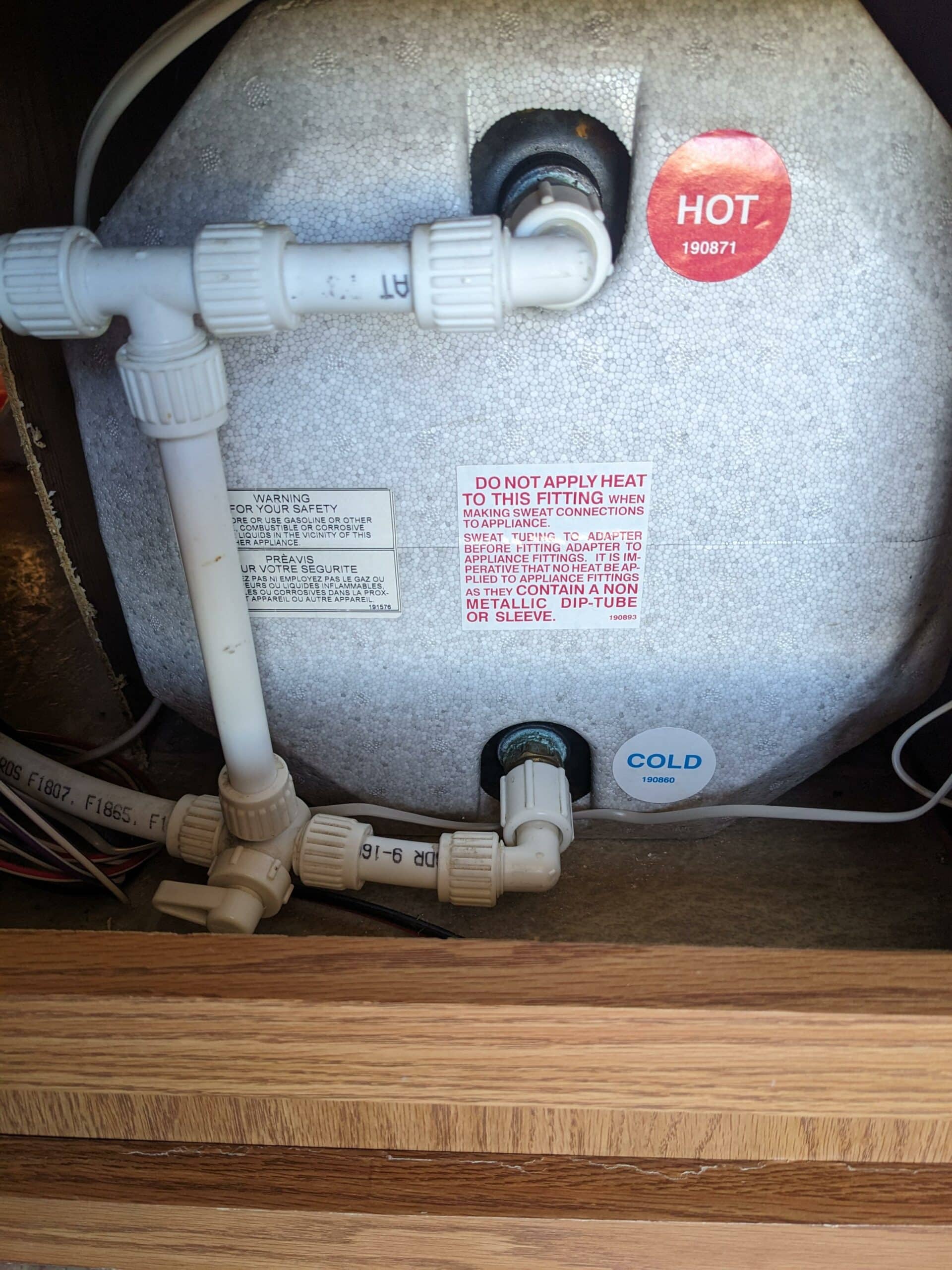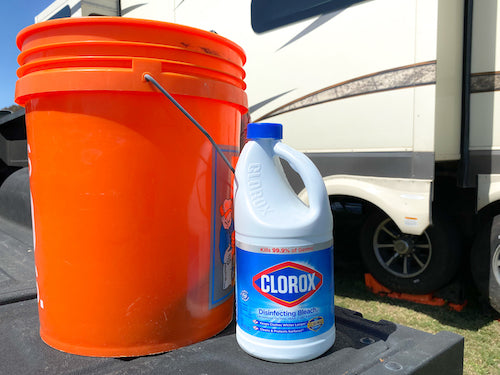Yes, you need to sanitize your RV fresh water system. Proper sanitation ensures safe, clean drinking water.
Sanitizing your RV fresh water system is crucial for maintaining clean and safe water. Over time, bacteria, mold, and algae can grow in the system, leading to potential health risks. Regular cleaning eliminates these contaminants, ensuring that your water remains potable.
An unsanitized water system can produce unpleasant tastes and odors, making your RV experience less enjoyable. To maintain optimal water quality, sanitize your system at least once every six months or whenever the RV has been in storage. Consistent maintenance guarantees a healthy water supply for drinking, cooking, and cleaning while on the road.

Credit: escapees.com
Importance Of Rv Fresh Water System
The importance of RV fresh water system cannot be overstated. Clean water is essential for your health and comfort. A well-maintained system ensures you always have safe water. It prevents illness and keeps your RV running smoothly. Let’s explore why maintaining this system is crucial.
Health And Safety
Clean water is vital for your health. Drinking contaminated water can make you sick. It can cause stomach pain, diarrhea, and more. You need to sanitize your RV water system regularly. This will remove harmful bacteria and germs. Ensuring your water is safe to drink.
Proper maintenance protects your family’s health. It also keeps your RV in good condition. A clean water system means fewer repairs. It also means a longer lifespan for your RV. Taking care of your water system saves money in the long run.
Preventing Contamination
Contaminated water can enter your system in many ways. Dirty hoses, tanks, or connections can cause problems. Regular sanitization helps prevent these issues. It stops bacteria from growing in your water tanks.
Sanitize your system at least once every six months. Use approved sanitizing agents. Always follow the manufacturer’s instructions. This keeps your water system clean and safe.
Here are some steps to prevent contamination:
- Use clean, food-grade hoses.
- Store hoses properly to avoid dirt.
- Flush the system before each trip.
- Inspect and replace old fittings.
These simple steps can make a big difference. They help keep your water fresh and safe.

Credit: blog.campingworld.com
Signs Your Rv Water System Needs Sanitizing
Maintaining a clean RV fresh water system is crucial for your health. Regular sanitizing ensures you have safe, clean water. But how do you know when it’s time to sanitize? Here are the key signs that your RV water system needs attention.
Unpleasant Odors
Do you notice a foul smell coming from your water taps? This is a clear sign that your system needs sanitizing. Bacteria and algae growth can cause these odors.
To check, fill a glass with water and sniff it closely. If it smells musty, it’s time to clean your system. Sometimes the smell can be strong and unpleasant, making it hard to ignore.
Cloudy Or Discolored Water
Water should be clear and transparent. Cloudy or discolored water is a sign of contamination. It may appear white, yellow, or even brown.
Fill a glass with water and hold it up to the light. If the water looks murky or has particles floating in it, your system needs sanitizing.
Discoloration often indicates the presence of harmful bacteria or minerals. This can affect the taste and safety of your water.
How Often To Sanitize Your Rv Water System
Sanitizing your RV fresh water system is crucial. It ensures safe drinking water. But how often should you do it? Regular sanitization keeps your water system clean. It prevents harmful bacteria and bad odors. Let’s explore how often to sanitize your RV water system.
Regular Maintenance
Regular maintenance is key to a healthy RV water system. Sanitize your RV fresh water system every six months. This routine keeps your water fresh and safe. Use a bleach solution for sanitizing. Follow these steps:
- Mix 1/4 cup of bleach with one gallon of water.
- Pour the solution into the fresh water tank.
- Fill the tank with clean water.
- Run the water through all faucets.
- Let it sit for 12 hours.
- Drain and flush the system with fresh water.
Regular sanitization helps avoid health risks. It maintains the quality of your water.
Seasonal Changes
Seasonal changes affect your RV water system. Sanitize your system before storing your RV for winter. This prevents bacteria buildup during inactivity. Follow the same steps as regular maintenance. Also, sanitize your system in spring. This ensures fresh water for your travels.
During summer, increased water usage may require extra sanitization. If you notice bad smells or taste, sanitize immediately. Keeping your water system clean ensures a pleasant RV experience.
| Maintenance Type | Frequency |
|---|---|
| Regular Maintenance | Every 6 months |
| Before Winter Storage | Once per year |
| Spring Sanitization | Once per year |
| Summer Extra Sanitization | As needed |
Proper sanitization keeps your RV water system in top shape. Follow these guidelines for safe and fresh water.
Materials Needed For Sanitizing
Sanitizing your RV fresh water system is crucial for safe drinking water. To do this effectively, you’ll need specific materials. This section covers the essential items required for the sanitizing process, ensuring you have everything ready for a thorough clean.
Cleaning Solutions
Choosing the right cleaning solutions is vital. Here are some options:
- Bleach: Effective and commonly used for sanitizing.
- White Vinegar: A natural alternative to bleach.
- Commercial RV Sanitizers: Specially formulated for RV water systems.
Make sure to use the correct amount for each solution. Too much can harm your system, while too little won’t sanitize effectively.
Essential Tools
You’ll need a few essential tools to complete the sanitizing process:
- Measuring Cup: For accurate measurement of cleaning solutions.
- Funnel: Helps pour the cleaning solution into the tank without spills.
- Hose: For flushing out the system thoroughly.
- Bucket: Useful for mixing and holding cleaning solutions.
Having these tools ready will make the process smoother and more efficient.
| Item | Purpose |
|---|---|
| Bleach | Sanitizing |
| White Vinegar | Natural Sanitizing |
| Commercial RV Sanitizers | Specialized Cleaning |
| Measuring Cup | Accurate Measurement |
| Funnel | Pouring Solutions |
| Hose | Flushing System |
| Bucket | Mixing Solutions |
Ensure you have all these materials before starting. This will make the sanitizing process quick and effective.
Step-by-step Sanitizing Process
Sanitizing your RV fresh water system is crucial. It ensures safe and clean water for all your needs. Here is a simple, step-by-step process to sanitize your system effectively.
Draining The System
First, you need to drain the system completely. Turn off the water pump. Open all faucets to let the water drain out. Don’t forget to empty the water heater and the fresh water tank. Remove any water filters before you begin.
Adding Sanitizing Solution
Next, prepare a sanitizing solution. Mix one-quarter cup of household bleach with one gallon of water. Pour this solution into the fresh water tank. Turn on the water pump. Open each faucet until you smell bleach. This ensures the solution has reached all parts of the system. Close the faucets and let the solution sit for at least 12 hours.
Flushing The System
After the solution has sat for 12 hours, it’s time to flush the system. Drain the fresh water tank again. Refill it with clean water. Turn on the pump and open all faucets until the bleach smell is gone. This may take a few refills and flushes. Repeat until the water is clean and odor-free.

Credit: rvsnappad.com
Common Mistakes To Avoid
Maintaining a clean RV fresh water system is crucial for safe travels. Avoid these common mistakes to ensure your water stays fresh and safe.
Using Incorrect Solutions
Many people use the wrong cleaning solutions. This can damage the system. Always use RV-specific sanitizing solutions. Household cleaners can be too harsh. They may leave harmful residues.
- Check the label for RV compatibility
- Follow the manufacturer’s instructions
- Never mix different cleaning agents
Using bleach is common, but follow the proper dilution ratio. Too much bleach can harm your system. Too little won’t sanitize properly.
Skipping Steps
Skipping steps in the sanitizing process is a big mistake. Each step is crucial for thorough cleaning.
- Drain the system completely
- Mix and add the sanitizing solution
- Let it sit for the recommended time
- Flush the system until the water is clear
Some people skip the rinsing step. This leaves chemical residues in your water. Always rinse multiple times to ensure the system is clean.
Skipping any step can lead to contamination. Follow each step carefully to keep your water safe.
| Common Mistake | Why It’s a Problem |
|---|---|
| Using incorrect solutions | Can damage the system and leave harmful residues |
| Skipping steps | Leads to incomplete sanitization and potential contamination |
Tips For Maintaining A Clean Water System
Maintaining a clean water system in your RV is crucial. It ensures safe drinking water and prevents contamination. By following simple tips, you can keep your fresh water system in top condition.
Regular Inspections
Regular inspections are essential for a clean RV water system. Check your water tanks and pipes frequently. Look for leaks, cracks, or any signs of damage. Inspecting the system helps you catch issues early. Use a flashlight to see inside the tanks clearly.
- Check water filters regularly. Replace them when necessary.
- Look at hose connections. Ensure they are tight and secure.
- Inspect the water pump for proper functioning.
Proper Storage
Proper storage of your RV’s fresh water system is vital. Always drain the water tanks when not in use. Stagnant water can lead to bacteria growth. Store hoses and connectors in a clean, dry place.
- Drain water tanks after each trip.
- Clean and dry hoses before storage.
- Store water-related items away from contaminants.
By following these tips, you can ensure safe and clean water. Regular inspections and proper storage are key. Keep your RV water system in excellent condition for a worry-free trip.
Alternative Water Treatment Methods
Maintaining clean water in your RV is essential. Sanitizing your RV fresh water system is crucial, but there are alternative methods. These methods ensure your water remains safe and clean.
Water Filters
Water filters are effective in removing impurities from your RV water supply. Types of water filters include:
- Carbon filters – Remove chlorine and odors.
- Ceramic filters – Block bacteria and parasites.
- Reverse osmosis filters – Eliminate dissolved salts and chemicals.
Choose a filter based on your needs. For example, if you need to remove bacteria, a ceramic filter is ideal.
Uv Purifiers
UV purifiers use ultraviolet light to kill harmful microorganisms in water. They are effective against bacteria, viruses, and protozoa. Benefits of UV purifiers include:
- Easy to install and use.
- No chemicals involved in the process.
- Maintains the taste and odor of water.
A UV purifier is a great option for ensuring your RV water is safe to drink.
Frequently Asked Questions
Why Should I Sanitize My Rv Fresh Water System?
Sanitizing your RV fresh water system removes harmful bacteria, viruses, and mold. It ensures safe drinking water. Regular sanitization prevents health issues and keeps your water tasting fresh.
How Often Should I Sanitize My Rv Water System?
Sanitize your RV water system at least once every six months. You should also sanitize it before long trips and after periods of non-use.
What Do I Need To Sanitize My Rv Water System?
You need household bleach, clean water, and a measuring cup. Follow manufacturer guidelines for specific sanitization procedures.
Can I Use Vinegar To Sanitize My Rv Water System?
Vinegar is less effective than bleach for sanitizing. It may not kill all bacteria. Use bleach for thorough sanitization.
Conclusion
Sanitizing your RV fresh water system is crucial for safe and clean water. Regular maintenance prevents harmful bacteria and ensures peace of mind. Follow the recommended steps to keep your water system in top condition. Enjoy your travels knowing your water is clean and safe.
Stay healthy and happy on the road!
